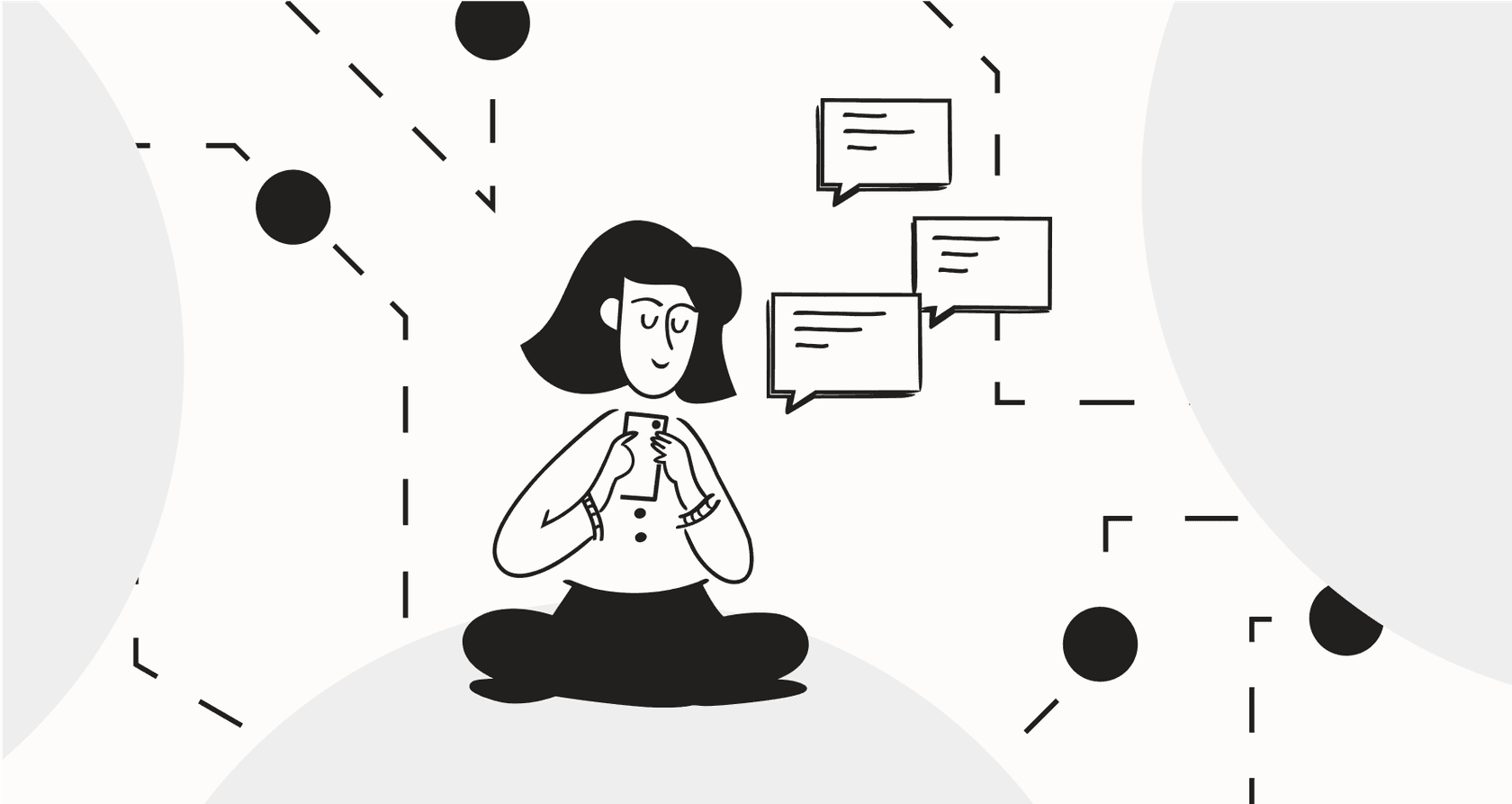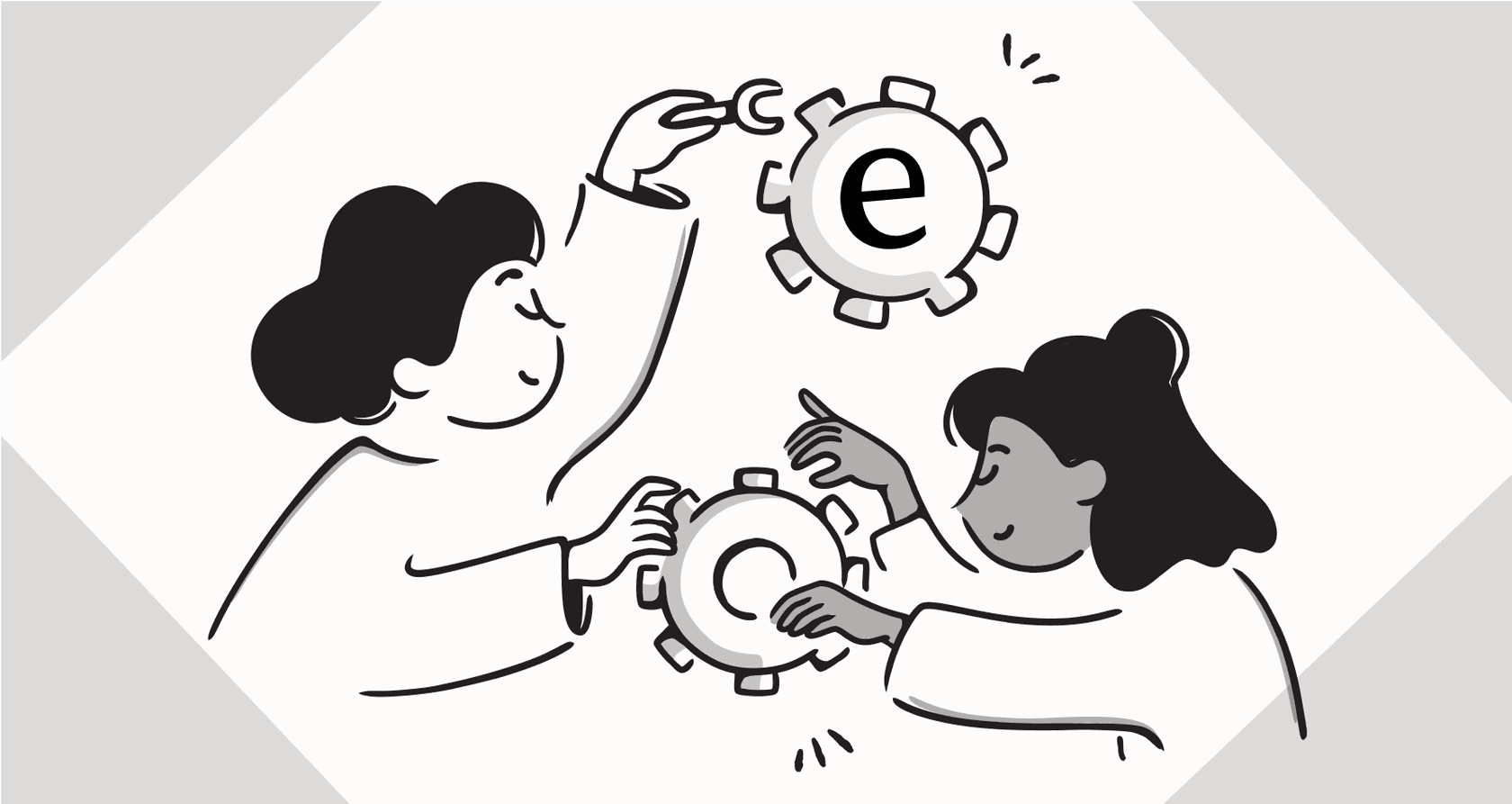
Feeling like your support team is drowning in tickets? Wish you could handle more customer questions without needing to hire a whole new crew? Yep, that's exactly why artificial intelligence (AI) and automation are becoming such a big deal. They're not just fancy tech words anymore; they're really useful tools that help support teams manage tons of tickets, get rid of boring, repetitive tasks, and keep costs manageable.
But jumping into AI and automation can feel a bit overwhelming, right? Where do you even start? How do you make sure it actually helps your team and your customers, instead of just making things more complicated? This guide is here to walk you through how to think about setting up, keeping things running smoothly, and making your AI and automation work even better for your support operations. We'll cover everything from the basics to making sure your AI agents stay sharp and play nicely with your human team. Tools like eesel AI are actually making this whole process much easier by plugging right into the systems you already use, bringing the power of AI directly into your daily work.
Understanding the basics of AI and automation
Before we dig into the how-to stuff, let's chat quickly about why AI and automation are pretty much essential in the support world these days and what they actually look like when they're working.
What is AI and automation in support?
Okay, simply put, AI and automation in customer support mean using technology to do tasks that people used to have to do. Automation, in a general sense, has been around forever – think about how tickets get automatically sent to the right department based on keywords. AI takes this way further. It lets systems actually understand what a customer is trying to ask, create responses that sound natural, and even do more complex things based on the conversation.
It’s all about building systems that can learn, change, and make smart choices, giving your team a break from the boring, repetitive stuff. As folks in the industry have pointed out, AI is way better at handling things like sorting tickets compared to older ways of automating.
Key benefits for your support team
So, what's in it for your team? The upsides are pretty great:
- Lower costs: When you automate answering common questions, you can really cut down on how much you're spending on operations because you need less manual work
- Faster everything: AI can handle and reply to questions instantly. This seriously speeds up how fast you respond and how quickly issues get sorted.
- Always on: Automated systems don't need coffee breaks or holidays. They can provide support 24/7, no matter the time zone or how many people you have working.
- More productive agents: By taking care of the simple, common questions, AI frees up your human agents. They can then spend their time on trickier problems that really need their empathy, good judgment, and creative thinking.
Common types of AI and automation tools
You'll probably run into a few different kinds of tools that use AI and automation in the support world:
- AI chatbots and virtual assistants: These are the bots you see on websites or messaging apps that chat directly with customers, answer questions, and guide them.
- Smart ticket sorting systems: AI looks at new tickets and automatically puts them in the right category, adds tags, and sends them to the right person or team.
- Automated email and ticket Replies: Systems that can write or send out answers to typical questions based on what's in the ticket.
- AI-powered knowledge bases: Tools that use AI to make searching easier, suggest helpful articles, or even create new help content.
What you'll need to consider before you start
Think of this part like getting your gear ready and checking out the map before you start building something. Getting AI and automation set up isn't just a matter of flipping a switch; you need to do some thinking beforehand.
Identifying the right use cases
Trying to automate absolutely everything right away is a recipe for feeling completely swamped. A much smarter way to go is to start small and focus on specific areas where AI and automation can really make a difference. Look for tasks that are:
- Repetitive: Are your agents answering the same questions again and again? (Like "Where's my order?" or "How do I reset my password?")
- High volume: Are certain types of tickets flooding your queue and taking up tons of time?
- Simple: Can the issue often be fixed by just giving information that's already in your help docs or by doing one quick thing?
Looking closely at your past tickets is super helpful here. What topics pop up the most? What tasks eat up the most agent time? Spotting these patterns helps you figure out the best places to start using AI.
Gathering and preparing your data
AI learns from data. Simple as that. How good the information is that you give it will directly affect how well your AI agent works. You'll need to pull together data from places like:
- Old support tickets
- Knowledge base articles and FAQs
- Internal company documents (like stuff in Google Docs, Confluence, Sharepoint, Notion)
- Product details and how-to guides
Getting all this data organized and cleaned up is really important. If your information is messy or doesn't match up, your AI will end up giving wrong answers. This step can feel like a hurdle, especially if your company's knowledge is scattered all over the place.
Choosing the right AI tools
There are tons of AI tools out there, from features built into your current helpdesk to special third-party platforms. When you're checking them out, you need to look beyond just the cool features. Think about:
- How well does it connect with the tools you're already using every day?
- How much can you change and customize it to fit your needs?
- Can it grow with your business as you get bigger?
- Is the price clear and predictable, or are there hidden fees that could surprise you?
While using the AI that comes with your helpdesk might seem easy, it often isn't as flexible or customizable, and it can cost more, especially when you need more advanced stuff.
How to implement AI and automation in customer support: a step-by-step guide
Once you know what you want to achieve and have an idea of your data sources, it's time to start putting together and using your AI support system.
Step 1: Plan and set up your AI support system
Start by choosing a solution that works well with the tools your team already uses, such as Zendesk, Intercom, or Freshdesk. While native AI tools are available, they often come with feature limits or extra costs. Tools like eesel AI offer more flexibility and clearer pricing.
Train your AI using all the data your team relies on. Go beyond help center articles and include past tickets, product documentation, and internal files from platforms like Google Docs, Notion, or Confluence. The more relevant information your AI has, the better its responses will be.
You can also customize how your AI speaks and behaves. Set rules for tone, escalation, and which sources it should pull from so it feels like an extension of your brand.
Step 2: Implement and integrate AI into your workflow
After training, link your AI to your other tools so it can take real action. For example, it can:
- Check order status through Shopify
- Add tags or assign tickets in Jira Service Management
- Automatically close common tickets and update customer records
Set up workflows that trigger these tasks. Even simple automations like tagging tickets or sending articles can save your team a lot of time.
Before going live, run tests. eesel AI includes simulation features that show how the AI would respond to real tickets. You can also test it with a small group of agents to make sure everything works smoothly before full rollout.
Step 3: Maintain and improve your AI support performance
Once your AI is running, keep an eye on how well it's working. Pay attention to:
- Deflection rate (how many tickets the AI resolves on its own)
- Resolution success (how often it solves the issue fully)
- Customer satisfaction scores and feedback
- Problem areas where the AI gets stuck or escalates
eesel AI makes this easier by showing clear metrics and flagging knowledge gaps. It also keeps your training data fresh by syncing automatically with connected sources like Google Docs and Notion, so you don’t need to update everything manually.
Step 4: Integrate AI with human agents for optimal support
AI should support your team, not replace it. Set up smart handoffs so that when a conversation needs a human, it transfers smoothly with all the context included. That way, customers don’t have to repeat themselves.
AI can also assist agents in real time. With tools like the eesel AI Assistant, agents can get suggested replies, surface relevant documents, and quickly review summaries of long conversations without leaving their helpdesk view.
Measuring the impact: calculating ROI and tracking success
Putting AI and automation in place is an investment, no doubt about it. To show that it's worth it and to keep justifying your "AI and automation support and maintenance" efforts, you need to measure what kind of impact it's actually having.
Key metrics for AI support
Besides your usual support numbers, focus on the ones that directly show what the AI is doing:
- Deflection Rate: This is the percentage of questions that the AI handles completely on its own.
- First Contact Resolution (FCR): How often problems are solved the very first time someone contacts you (AI should boost this for simple cases).
- Average Handling Time (AHT): AI should seriously cut down the time it takes to deal with tickets that are automated.
- Customer Satisfaction (CSAT) & Net Promoter Score (NPS): See if faster, always-available support makes customers happier.
- Cost Per Resolution: Figure out how much it costs for the AI to solve a problem versus a person.
Quantifying cost savings and efficiency gains
Calculating your ROI means comparing your support costs and how efficient you were before you put AI in place versus after. This includes:
- Saving money on labor costs (because agents spend less time on repetitive tasks).
- Savings from stopping problems before they happen (like in IT support with predictive maintenance.
- Potentially making more money because customers are happier or sales-related support is faster.
- Getting more done without having to hire more people.
Lots of businesses report saving a good chunk of money, sometimes between 20-40%, just by automating things.
Pro tip: eesel AI gives you tools to help you measure this stuff. Its reporting features track key numbers like deflection rate, and it even has an ROI calculator to help you see the time and money you're saving thanks to automation.
| Metric | Before AI (Hypothetical) | After AI (Hypothetical) | Impact |
|---|---|---|---|
| Deflection Rate | 0% | 30% | 30% of tickets handled automatically |
| Average Handling Time | 8 mins | 5 mins | 3 mins saved per interaction |
| Cost Per Resolution | $5 | $1.50 (for AI) | Significant cost reduction for deflections |
| Agent Time on Repetitive | 40% | 10% | Agents focus on complex issues |
Best practices and avoiding common pitfalls
Navigating the world of AI and automation can have its tricky spots. Here are some pointers to help make sure your setup goes smoothly and keeps working well, plus some common mistakes to watch out for.
| Tips for Successful AI Implementation | Challenges to Anticipate and Overcome |
|---|---|
| Start with clear goals you can measure: What exactly are you trying to fix? (Like, do you want to cut down on how long tickets take? Increase how many questions the AI handles?) | Data privacy and security: Double-check that your AI tool handles sensitive customer info carefully and follows all the rules. |
| Make sure your data is good: If you put bad info in, you'll get bad info out. Your training data needs to be correct, complete, and tidy. | Getting tools to work together: Connecting AI to your current systems can be tough if the tool doesn't have good integration options. |
| Get your support team involved: Talk to them early on. Show them how AI will make their jobs easier, not take them away. | Not having enough internal know-how: You might need to train your team or get outside help to manage AI effectively. |
| Tell customers about the changes: Let them know about the new ways they can get help and what they can expect. | Your human agents being hesitant: Address any worries they have about their jobs and show them how AI will actually make their workload and job satisfaction better. |
| Keep watching and improving: AI isn't something you set up once and forget about. Check how it's doing regularly and make tweaks. | Choosing a tool that doesn't actually do much: Some bots just repeat help center articles instead of really solving problems. |
| Always offer a way out: Make it simple for customers to talk to a person if they need to. | Unexpected costs: Be careful about pricing models that charge you for every single interaction or per agent. These costs can really add up fast. The AI built into helpdesks can be especially tricky here. |
Ready to transform your customer support with AI and automation?
Bringing AI and automation into your support setup isn’t a one-time task. It’s an ongoing process that starts with smart planning, thoughtful integration, and regular updates to keep everything running smoothly. When done right, the results speak for themselves—faster resolutions, lower costs, more productive agents, and happier customers.
If you want an AI support agent that connects with your helpdesk (like Zendesk, Intercom, or Freshdesk), pulls from all your knowledge sources (including past tickets, Google Docs, Confluence, Notion, and SharePoint), handles real tasks, and keeps pricing simple with a pay-per-interaction model, take a closer look at this option.
eesel AI helps support teams automate smarter without the hassle or surprise costs. It’s built to grow with your business, work alongside your agents, and deliver real value from day one.
Want to see how it fits into your workflow? Book a demo or start a free trial today (you won't need a credit card to get started).







